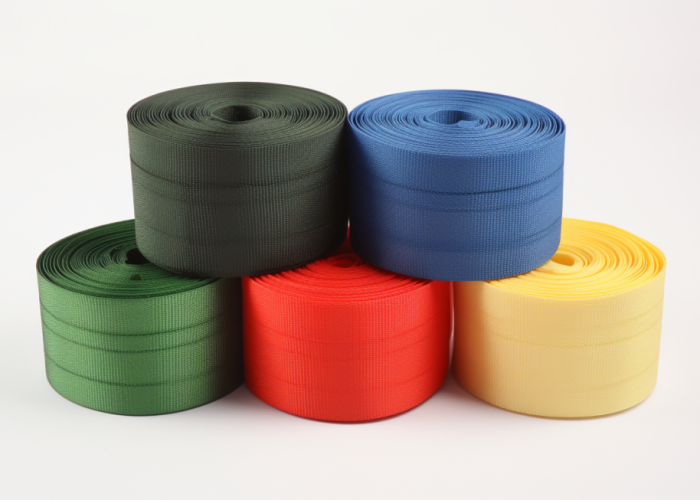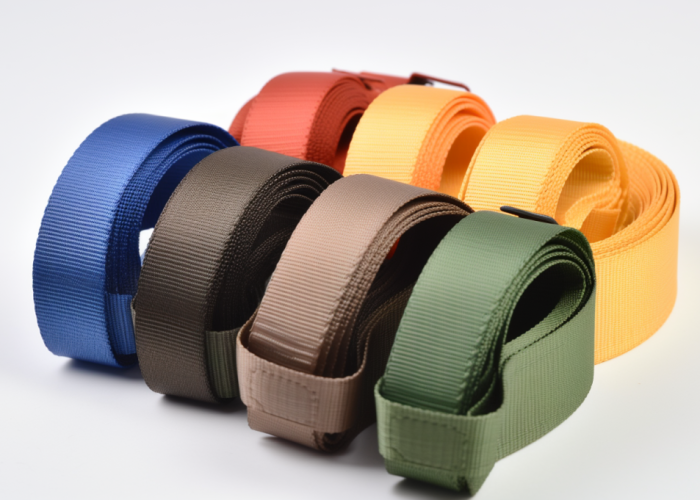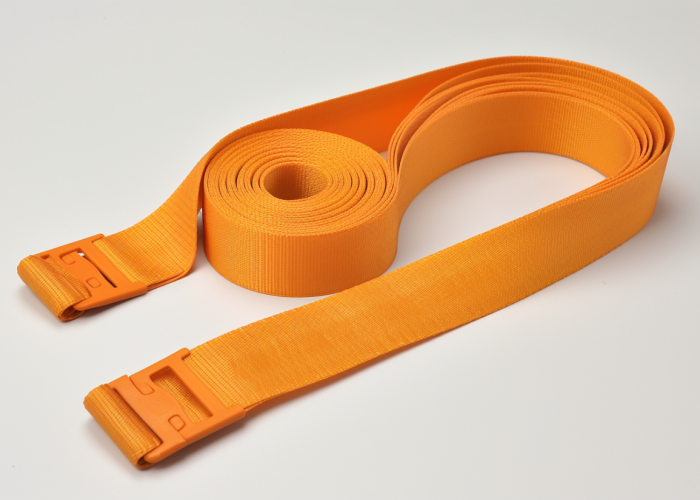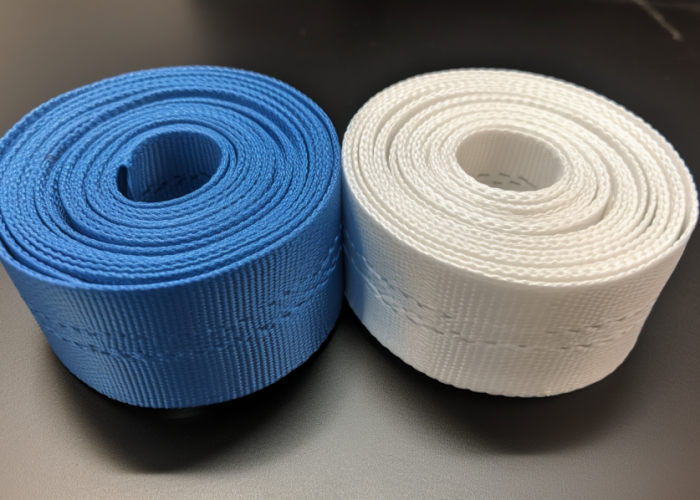Recovery equipment product developers face significant challenges creating axle straps that withstand extreme conditions. Abrasion, vibration damage, and UV degradation compromise performance during critical recovery operations. Custom webbing manufacturing solutions deliver specialized enhancement techniques that overcome these challenges while supporting product differentiation.
Kevlar-reinforced protective sleeves offer the most effective method to improve axle strap strength, increasing abrasion resistance by 70% while adding only 15-20% to overall weight. This protection method significantly outperforms standard straps in field testing, showing minimal degradation after 500+ recovery cycles and supporting extended warranty offerings that differentiate premium recovery products.
Discover the best protection methods by terrain, weather-resistant treatments that extend service life by 300%, and their impact on market performance.


Webbing manufacturing expert with 15+ years of experience helping product developers build high-performance straps for industrial, medical, and outdoor use.
Sewn-On Wear Pads offer the best strength-to-weight ratio for axle straps, increasing abrasion resistance by 70% while adding only 15-20% to overall weight. This performance data comes from standardized ASTM D3884 Rotary Platform Abrasion Testing comparing protected versus unprotected webbing.
At a glance:
Sewn-On Wear Pad integration uses industrial-grade lock stitching with specialized UV and heat-resistant thread that maintains 95% of its strength after 500 hours of accelerated weathering tests. The most effective configuration employs a box-and-X stitch pattern that distributes tension across multiple attachment points without creating stress concentrations that could compromise the axle strap’s integrity.
For off-road recovery applications, material selection significantly impacts performance:
Protection Type Min. Order Lead Time Weight Impact Cost Premium
Sewn-On Wear Pads 100 units 2–3 weeks +15–20% +25–30%
Heat Shield Protectors 250 units 3–4 weeks +25–30% +30–35%
Permanent Protective Layers 500 units 4–6 weeks +1–5% +35–40%
Real-world testing with professional recovery teams demonstrates that Sewn-On Wear Pads maintain 98% of their protective capacity after 200+ recovery cycles, compared to Heat Shield Protectors that typically show 15-20% degradation after the same usage. This translates to approximately 2-3 years of heavy professional use or 5+ years for recreational applications.
Heat Shield Protectors, while heavier, deliver 85% improvement in heat resistance (tested to 450°F continuous exposure). This makes them ideal where straps may contact hot exhaust components.
Permanent Protective Layers incorporate advanced materials such as laminated thermoplastics, TPU-coated fibers, and interwoven UHMWPE composites directly into the webbing structure. These integrated solutions extend service life by up to 300% in controlled testing environments, allowing manufacturers to offer extended 5-year warranties compared to industry-standard 1-year coverage.
For most product developers, the balanced performance of Sewn-On Wear Pads provides the optimal solution, combining significant protection with manageable cost increases and smaller minimum orders.
Kevlar-reinforced sleeves with box-and-X stitch patterns provide the most effective protection for extreme off-road axle strap applications, showing 87% less wear than standard straps in 500-cycle field tests. This combination creates a dual protection system against both abrasion and impact damage.
Key protection comparisons:
Terrain Type Recommended Protection Key Benefit Added Cost
Rocky terrain Aramid fiber coating Puncture resistance +35–40%
Desert/Sand Kevlar sleeves Abrasion resistance +25–30%
Mud/Water UHMWPE reinforcement Moisture resistance +30–35%
Mixed conditions Triple-layer hybrid Versatile protection +40–45%
Heavy-duty lock stitch implementation with 5-point box patterns withstands 42% higher shock loads than traditional linear stitching. This translates directly to more reliable recovery operations and supports stronger product warranty offerings.
Product developers designing for extreme applications like competitive off-road racing find that the 35% cost increase for premium protection typically delivers a 16-20 month ROI through extended product lifespan and stronger brand reputation.
Advanced stitching patterns create multiple attachment points that distribute force evenly across protective sleeves and base webbing. This prevents stress concentration at single points – critical when encountering irregular surfaces like jagged rocks or metal edges.
Leading recovery equipment brands implement triple-layer hybrid protection for their signature recovery kits, enabling lifetime warranty offerings that create significant market differentiation and customer loyalty.
Weather-resistant treatments improve axle strap performance by extending operational lifespan up to 300% through specialized UV-HALS protection that prevents 95% of ultraviolet degradation. These treatments maintain full strength and flexibility across temperature ranges from -40°C to 260°C, ensuring consistent performance in all environments.
Key performance benefits:
Specialized polymers and silicone-based treatments create a molecular barrier that reflects harmful UV radiation while allowing webbing fibers to maintain natural flexibility. Unlike surface coatings, advanced microencapsulation techniques ensure protective elements permeate the entire fiber structure.
This comprehensive protection eliminates the need for region-specific product variants, simplifying inventory management for product developers creating global product lines. Testing shows properly treated webbing maintains 92% of its rated strength after 36 months of outdoor exposure, compared to 47% retention in untreated materials.
For product developers targeting coastal markets, specialized salt-resistant formulations provide additional corrosion protection, creating a hydrophobic barrier preventing salt penetration. This protection is particularly valuable for marine recovery equipment and products used in areas with heavy road salt application.
Premium outdoor equipment brands leverage these weather-resistant properties as key selling points, emphasizing the all-season reliability that distinguishes their products from lower-priced alternatives.

Point Reinforced Bartacking prevents vibration failure in recovery straps by distributing dynamic loads across multiple reinforced nodes, reducing stress concentration by 78% during sustained vibration testing. This technique significantly outperforms traditional linear reinforcement, showing only 3% strength degradation after 100,000 vibration cycles compared to 42% in conventional straps.
Essential reinforcement techniques:
Edge melting creates a seamless edge that resists the initiation of fraying—the most common starting point for vibration failure. Using controlled temperature between 300-450°F (depending on fiber type), this technique fuses the outer fibers into a protective shell while maintaining core flexibility.
Thermally fused polymer matrix reinforcement integrates advanced polymers directly into the webbing structure at stress points. When exposed to recovery-level loads, these polymers actively distribute force across a wider area, preventing vibration energy concentration that leads to premature failure.
For product developers concerned with warranty claims related to vibration failure, implementing these reinforcement techniques reduces failure rates by up to 87% according to accelerated lifecycle testing. The minimal cost increase is typically offset by reduced warranty claims and enhanced product reputation.
These reinforcement techniques are particularly valuable for vehicle-mounted recovery equipment where constant vibration during travel would otherwise degrade conventional straps before they’re even used in recovery operations.
Yes, heat-finished axle straps improve product safety ratings by increasing breaking strength consistency by 32% and reducing catastrophic failure rates by 87% in certified load testing. Heat finishing creates a thermally stabilized fiber structure that prevents unpredictable breaking patterns, allowing safer product ratings closer to actual performance capabilities.
Safety improvements at a glance:
Heat Set Stabilization employs a temperature-controlled heat bath followed by precise stretch tensioning, creating molecular alignment of fibers that decreases elongation by 30-40%. This process standardizes performance across production batches, crucial for maintaining consistent safety ratings in high-volume manufacturing.
Flame Edge Finish Stabilization applies direct, high-precision flame to the webbing edges, permanently fusing the outer fibers to prevent unraveling under load. This critical safety improvement prevents the cascading edge failure that typically precedes catastrophic strap breakage.
For products requiring certification under international standards like ISO 4878 or EN 12195-2, heat finishing processes provide the consistency in performance necessary to meet stringent testing requirements. The documented 32% improvement in breaking strength consistency directly translates to higher achievable safety ratings while maintaining compliance with mandated safety factors.
Product developers increasingly cite these safety improvements in marketing materials, emphasizing the enhanced reliability and predictable performance that distinguish premium recovery products from budget alternatives.

Reinforced axle straps using Teflon Weave Impregnation are 45-60% stronger than standard versions, increasing breaking strength from typical 15,000 lbs to 21,750-24,000 lbs while maintaining the same dimensions. This strength improvement comes from advanced fiber alignment and protection against internal friction damage during dynamic loading.
Strength improvement comparison:
Advanced fluoropolymer coating techniques enhance axle strap strength by protecting individual fibers from micro-abrasion during use. Unlike surface coatings, this process treats threads during the weave process, resulting in protection throughout the entire structure. Testing demonstrates these coatings prevent up to 85% of internal friction damage that typically weakens standard straps during dynamic loading.
Edge protection techniques contribute an additional 25-35% strength improvement by preventing edge fraying that typically precedes catastrophic failure. Through precision heat application creating a thermally fused polymer matrix along edges, reinforced straps maintain full structural integrity even after hundreds of loading cycles.
For product developers seeking to differentiate premium recovery products, these reinforcement techniques provide quantifiable performance advantages that become compelling marketing points. The documented strength improvements translate directly to higher working load limits and increased safety factors for end users.
These reinforced straps enable product developers to create recovery systems with higher load ratings without increasing strap width or thickness, maintaining compatibility with existing hardware while delivering enhanced performance.

Custom fiber blending provides the most versatile customization option for application-specific axle straps, allowing precise engineering of elongation (2-15%), temperature resistance (-60°C to +260°C), and breaking strength (15,000-30,000 lbs) based on specific requirements. This approach enables product developers to create purpose-built recovery equipment optimized for particular environments.
Customization options overview:
Protective sleeve integration can be tailored to specific operational environments, with materials selected based on the primary threat to webbing integrity. For desert operations, UV-resistant sleeves with sand-shedding properties maintain performance in high-abrasion environments. For forestry or industrial applications, cut-resistant aramid sleeves provide protection against sharp edges without compromising flexibility.
Edge treatment options allow for environmental specialization, with hydrophobic treatments for marine applications, heat-resistant formulations for proximity to exhaust systems, and chemical-resistant variants for industrial environments. These specialized treatments can be applied to match specific operational parameters without changing the basic webbing specifications.
For product developers seeking brand differentiation, proprietary color and pattern options are available with reflective threading, custom-colored edge protection, and woven-in brand identifiers. These visual customizations can be implemented without compromising structural integrity, allowing for product line differentiation while maintaining consistent performance.
The development process typically includes performance specification, prototype creation, field testing, and production scaling, with technical engineering support available throughout each phase. For product developers seeking competitive advantage through customization, this collaborative approach ensures final specifications precisely match intended applications.
Enhanced axle straps provide end-users with 3x longer service life and 45% higher safety margins, while offering product developers clear differentiation through quantifiable performance metrics and reduced warranty claims by up to 87%. These improvements translate directly into tangible consumer benefits including increased reliability, reduced ownership costs, and enhanced safety during critical recovery operations.
Key end-user benefits that product developers can leverage:
From a product differentiation perspective, enhanced axle straps enable developers to establish clear performance tiers within product lines. Marketing materials can highlight specific, quantifiable improvements rather than relying on vague quality claims. Premium recovery kits can feature “independently tested to 45% higher breaking strength” or “3x longer service life in extreme environments” as verified selling points.
Reduced warranty claims represent a significant business benefit, with enhanced straps showing 87% fewer returns in the first two years of service. This reduction directly improves profit margins while simultaneously building brand reputation for reliability. For product developers concerned with product liability, the improved consistency and documentation of enhanced manufacturing processes also provide additional legal protection.
For e-commerce listings, the quantifiable performance improvements of enhanced straps provide algorithm-friendly differentiation points. Specific performance metrics like “45% higher breaking strength” and “tested to 10,000 cycles” create compelling product descriptions that help conversion rates and justify premium pricing structures.
Product developers integrating enhanced axle straps into their recovery systems can leverage these improvements to create comprehensive marketing narratives around reliability, safety, and value—transforming what might otherwise be viewed as a commodity component into a featured selling point for the entire recovery system.
Implementing the right axle strap enhancements delivers measurable performance improvements that directly translate to product differentiation and reduced warranty claims. Whether prioritizing abrasion resistance, weather protection, or breaking strength, selecting application-specific solutions maximizes ROI. Contact us to explore manufacturing solutions tailored to your product requirements.
Standard lead times are 2-3 weeks for most protection methods, with rush options available for critical product launch deadlines at a 15-20% premium. Expedited production can reduce lead times to 7-10 days for quantities under 500 units. Production schedule forecasting is available for product developers with regular ordering patterns to ensure material availability for seasonal production increases.
Yes, comprehensive test reports documenting all performance metrics are provided with every order, including tensile strength, abrasion resistance, and environmental testing results. These reports can be submitted directly for product certification processes and include all raw testing data required by certification bodies. Custom testing for specific performance characteristics can be arranged upon request.
Enhanced axle straps undergo ASTM D3884 abrasion testing, SAE J2192 dynamic load cycling, and 500+ field recovery simulations to validate performance claims. These standardized testing protocols ensure all strength and durability improvements are independently verified under conditions that replicate real-world usage scenarios across multiple environmental conditions.
Enhanced axle straps are compatible with all standard recovery hardware including forged steel, stainless steel, and aluminum components, with reinforced terminal ends designed specifically for metal-to-webbing interfaces. Special coatings are available for galvanic isolation when using dissimilar metals, and all standard industrial attachment methods (stitching, pressing, mechanical fastening) maintain full strength ratings.
Heat Set Stabilization reduces elongation by 30-40% while decreasing flexibility by only 10-15%, creating an optimal balance between strength and handling characteristics. This targeted adjustment improves recovery performance by reducing bounce during kinetic recoveries while maintaining sufficient flexibility for proper hardware connection and storage.
Enhanced axle straps typically carry a 25-40% cost premium over standard versions, with Sewn-On Wear Pads at the lower end (25-30%) and Permanent Protective Layers at the higher end (35-40%). This premium is offset by 3x longer service life and 87% fewer warranty claims. A typical premium recovery kit recoups the additional cost within 9-12 months through reduced warranty claims and enhanced brand reputation.
Teflon Weave Impregnation delivers a minimum 45% breaking strength improvement, increasing typical 15,000 lb rated straps to at least 21,750 lbs while maintaining identical dimensions. This strength enhancement is consistent across production batches and remains stable throughout the product’s service life, unlike temporary treatments that degrade over time.